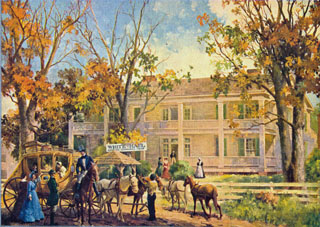
NEWSPAPER ABSTRACTS FROM “THE CLEBURNE NEWS, Heflin, Cleburne County, Alabama
for JULY 1919
AGED WOMAN BURNED TO DEATH
News of the horrible death of Mrs. Brown, wife of W.Z. [William Zealous] Brown on Heflin, route 8, near Lecta on Monday was brought to town on Wednesday morning by Mr. W.J. Bell. According to the report, Mrs. Brown was in the act of starting a fire in the stove preparatory to cooking dinner and in pouring kerosene on the hot coals in the stove, the blaze ignited the oil in the can causing an explosion, enveloping the unfortunate woman in a solid mass of flame, all of her clothing being burned off with the exception of the waistband of her skirt. Although her entire body was burned to a solid crisp, Mrs. Brown strugged to the well not far away and poured dipperfull after dipperfull of water on her head and body. Continue reading
